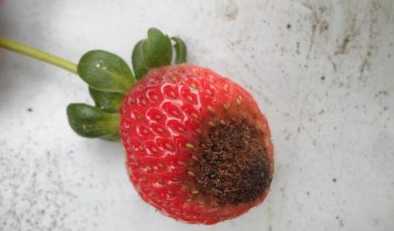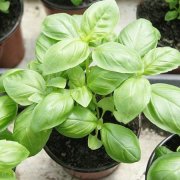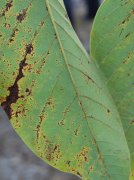How does strawberry anthracnose cause symptoms? Introduction to the control methods of strawberry anthracnose
Strawberry anthracnose is a destructive fungal disease that, if left uncontrolled, can destroy entire crops. Treating strawberry anthracnose may not completely eliminate the disease, but early attention can control the problem.
Strawberry anthracnose information strawberry anthracnose was once thought to be a disease in warm, humid climates, but the problem is becoming more and more common no matter where strawberries grow. The disease is usually introduced on infected strawberry plants. Once established, fungi can live in the soil for months. Fungi winter on dead leaves and other plant remains, and there are several kinds of weeds. Although spores are not airborne, they are distributed through Rain Water, irrigation or human or gardening tools. Strawberry anthracnose is developing rapidly. Signs of strawberries with anthrax the anthracnose of strawberries affects almost every part of the strawberry plant.
If the crown of the plant is infected, usually showing rotten cinnamon red tissue, the entire strawberry plant may wither and die. In the fruit, signs of disease include light brown, brown or whitish lesions. Eventually, the sunken focus covered by pink and orange spores expands rapidly, covering the entire berry and gradually blackening and mummification. Flowers, leaves and stems may also show tiny salmon spores. How to deal with resistant varieties of strawberry anthracnose.
Check your strawberry patches often, especially in warm and humid weather. As soon as they appear, remove and destroy them. Water the ground as much as possible. If you have to use a sprinkler, water it in the morning so that the plants have time to dry before the temperature drops at night. Don't work in strawberry patches when the plant is wet. Cover the planting area with straw to minimize splashing. Avoid overfeeding, as too much fertilizer will make strawberry plants more likely to get sick. Remove old, infected plant debris, but be careful to work in the area when infected. Keep gardening tools clean to prevent disease from spreading to non-infected areas. Keep weeds because some weeds contain pathogens that cause strawberries and anthracnose. Practice rotation.
Do not plant strawberries or other susceptible plants in infected areas for at least two years. Fungicides may be useful if used at the first sign of disease.

- Prev

What is cinnamon basil? How to plant cinnamon basil in order to burst the sowing time
What is cinnamon basil? Cinnamon basil, also known as basil Mexico, is native to tropical and subtropical climates around the world. Cinnamon basil plants thrive when the temperature is 80 and 90s (27-32 ℃ or higher). This basil plant shows dark green leaves and cinnamon.
- Next

The occurrence of rust in pineapple and Sakya orchards, what are the symptoms and characteristics of rust? what are the prevention and control methods?
Due to the heavy moisture in orchards such as mountain areas and river valleys, it is easy to cause the spread and spread of "Annona rust". The Agricultural improvement Farm of Taitung District of the Council of Agriculture (hereinafter referred to as Taitung Field) recently monitored Peinan, Luye and Donghe and found that there have been some pineapple Sakyamuni fruits.
Related
- A course of planting techniques and methods on how to grow carrots
- How to plant the latest tulips?
- Is it better to pick tea in the morning or in the afternoon? When is the best time for tea to be picked? what is the third or fifth tea?
- Launch Yuanxiao Happy combination Haocha + Tea Yuan healthy Taste
- Penghu Tourism "Fireworks 20 Parade with You"
- 2022 West Lake Happiness holds "Digital Revitalization Voucher" and draws iphone13 and laptop.
- Banqiao Fuzhou social houses are designed to change start-up combined with police elimination to create a safe and livable environment
- The convenient measure of "mechanical weeding" in Xinbei has been abused and the Agriculture Bureau has imposed heavy penalties on the illegal land consolidation.
- Changgeng University Joins Hands with Four Memory Factories to Rescue Memory Talent Shortage
- The list of Taiwan's top 100 MVP managers is listed by the Director-General of the Farmers' Association of Sanxia District.

